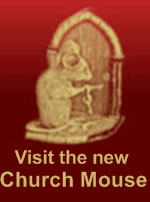|
I
have an image of an arc floating on a vast sea with
sails set to the horizon. There are people on board
from diverse cultures and backgrounds, rescued from
a sunken vessel. This image slowly emerged during my
10 years as a parishioner of St
Vincent’s
Catholic Church in Redfern, Sydney.
Today,
from my home in New Zealand that image remains a powerful
symbol of hope as I live and work among mostly young
people who are starving for the real bread - a church
that can taste the sacred intoxicating wine of creation
in which we are immersed instead of being participants
in its destruction. A church that shares the bread of
sorrows that sustains us in a world torn apart by war
and by destruction in its many guises.
In
1979 Ted Kennedy PP of Redfern and beloved of the Aboriginal
community invited the Blessed Sacramental Sisters to
Redfern to open a house of contemplation close to the
streets. It was late November when Maureen Flood, Betty
McMenamin and I arrived at 43
Forbes Street,
Newtown.
I
was 41 years old and had been a Blessed Sacramental
Sister for 13 years - 5 of which was spent in strict
enclosure in our house in Melbourne.
When I first arrived at St
Vincent’s
Church I was struck by a bare simplicity that marked
the liturgical reforms of Vatican II. The main altar
was towards the middle of the church against the side
wall - more like a table with the seating arranged around
it. An elderly nun, still fully habited played the organ
every Sunday at the 10
o’clock
Mass.
The
interior walls with its peeling paint was like the skin
of a primeval creature shedding itself as it burst with
new life. The random broken windows of shattered stained
glass bore witness to the suffering and frustration
of a people marginalised and betrayed by the Australian
Church
in which they had no voice.
I
had never seen Aboriginal people inside a Catholic Church
before. Not only were they welcome here but they were
central to every celebration I attended. Their presence
was in keeping with Ted’s theology that places “the
poor” at the heart of the kingdom and consequently at
the head of the Church. The Eucharist took on a depth
I hadn’t experienced before. It was as if they tore
apart a cultural veil that obscured the Eucharist and
revealed the living broken body and blood of the risen
Christ through their cries of grief, outbursts of anger
and frustration and even humour as they walked in and
out of the Church during the Mass.
The word of God often took on new depths when someone
spontaneously stood up and said “Father Ted I have something
to say”.
One
of two such moments that had a profound effect on my
life came after the 10
o’clock
Mass one Sunday morning. A young Aboriginal woman stood
up before the congregation and called her daughter to
come and stand beside her. She put her arms around her
and said “My 16 year old daughter is pregnant. Would
you please welcome this new life into our community”.
We all clapped as tears rolled down my face. I had a
lost a child to adoption 24 years earlier in a cultural
climate of shame, secrecy and denial coupled with a
clinical brutality that had the blessing of the Church.
Now I was seeing for the first time what the attitude
of the Church could
be when the most marginalised and rejected people hold
a place of reverence and “authority” at the centre of
the Church.
The
other moment was also in the Redfern
Church
when a young, strong Aboriginal leader Lilla Watson
told the congregation “If you have come to help us you
are wasting your time, but if you have come because
your freedom is bound up with ours, let us work together”.
I
found my son 13 years ago. In that time I have lived
through a range of extreme emotions from ecstatic joy
of reunion to a bottomless grief put on hold for 25
years. The release of grief unleashed an outrage over
the injustice and brutality of the adoption experience
and the impact it has had on the lives of hundreds of
thousands of families around Australia and New Zealand
and of course many countries around the world.
During
these times of pain, I have often drawn on the wisdom
of Lilla Watson - that our freedom is in rejecting the
judgments and definitions of who we are by a Church
that has not as yet experienced the privilege of being
set free; that has not as yet joined the rejected and
marginalised people - the very ones Jesus choose as
his friends and disciples and who were integral to the
foundation of the early Church.
In
this time of the breaking down and disintegration of
lifeless structures and our growing awareness of the
integrity and sacred depths of all creation, I see St
Vincent’s Church in Redfern as a beacon of hope in a
sea of darkness signalling towards the dawn.
by Marie Grünke
|
